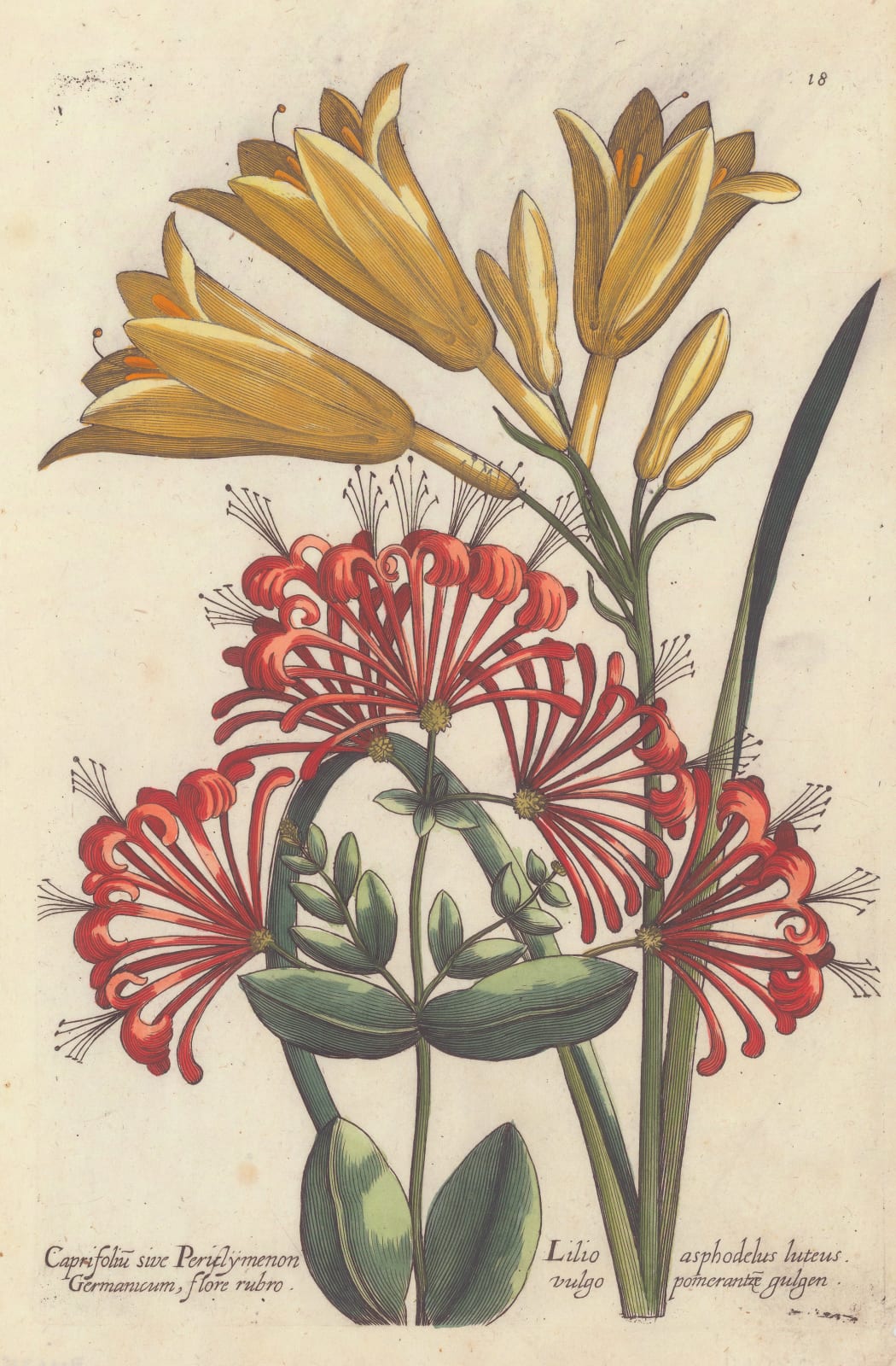Theodore De Bry
28 x 18 cm
The 17th century was a period of great significance in the history of botanical illustration. Whereas previously plants and herbs had been studied almost exclusively for their medicinal properties, the 17th century saw the emergence of a more general appreciation of the natural world.
By the early 1600s, Natural History was well on the way to becoming an acceptable pastime for educated people and ‘florigelia’ began to replace the "herbals" of the previous century. ‘Florigelium’ are a category of books where the plates are more important than the text. The earliest florilegia were albums of paintings which their owners had commissioned as a record of rare and favourite flowers in their gardens. The advent of copper engraving with its sympathetic interpretation of line, made it possible for such florilegia to be appreciated by a wider audience.
Theodor de Bry's Florilegium Novum pioneered this new class of flower illustration. Based in Frankfurt, de Bry was a publisher of great significance. Working with his son Johann and his nephew Johann Israel, he dedicated much of his life to the successful travel book series Collectiones Peregrination (1590-1694). Whilst collating topographical information for this series, de Bry gained access to new information regarding foreign plant species unknown to many of his contemporaries.
De Bry’s work is important not only for the variety of flowers it covers, but also for the verve with which they are engraved. In their combined energy and accuracy, de Bry's plates would set the standard for a new era of botanical illustration.


